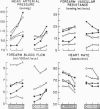Abstract
Ascorbic acid is a required cofactor in the conversion of dopamine to norepinephrine in vitro, and the deficiency of this vitamin in guinea pigs is associated with degeneration of autonomic ganglion cells and with cardiac supersensitivity to norepinephrine. Because of these findings, we tested the hypothesis that ascorbic acid deficiency in man alters autonomic cardiovascular reflexes and vasomotor responses to adrenergic stimuli. We studied five normal volunteers who had been deprived of ascorbic acid for a period of 3 months; they had developed symptoms and signs of scurvy and their plasma levels of ascorbic acid averaged 0.178 ±SE 0.07 mg/100 ml. We repeated the studies after giving the subjects vitamin C for a period of 4 months; they had become asymptomatic and their plasma ascorbic acid had increased to an average of 1.68 ±0.151 mg/100 ml.
Blood flow to the left forearm (plethysmograph), arterial and central venous pressures, and heart rate were measured before and after exposure of the lower half of the body to subatmospheric levels of pressure and before and after intravenous and intra-arterial (left brachial artery) infusions of norepinephrine and tyramine.
Average values of blood flow (7.9 ±1.4 ml/min per 100 ml), arterial pressure (91.2 ±4.6 mm Hg), heart rate (68 ±4.4 beats/min), central venous pressure (6.1 ±1.1 mm Hg), and plasma catecholamines (0.68 ±0.20 μg/liter) obtained during ascorbic acid deficiency were not altered significantly after correction of the deficiency. Vasoconstrictor responses to intra-arterial norepinephrine and tyramine were augmented after vitamin repletion. During ascorbic acid deficiency, four subjects had reduced responsiveness of resistance vessels of the forearm to lower body negative pressure as compared to the responsiveness observed after vitamin repletion. Reflex tachycardia during lower body negative pressure and reflex bradycardia during the pressor responses to intravenous tyramine and norepinephrine were similar during the two studies.
The results suggest that the decreased vascular responsiveness to intra-arterial norepinephrine and tyramine and to lower body negative pressure during ascorbic acid deficiency is caused by a defect in the ability of resistance vessels to constrict in response to adrenergic stimuli. Ascorbic acid deficiency in man does not interrupt autonomic reflexes and does not appear to cause significant depletion of endogenous norepinephrine.
Full text
PDF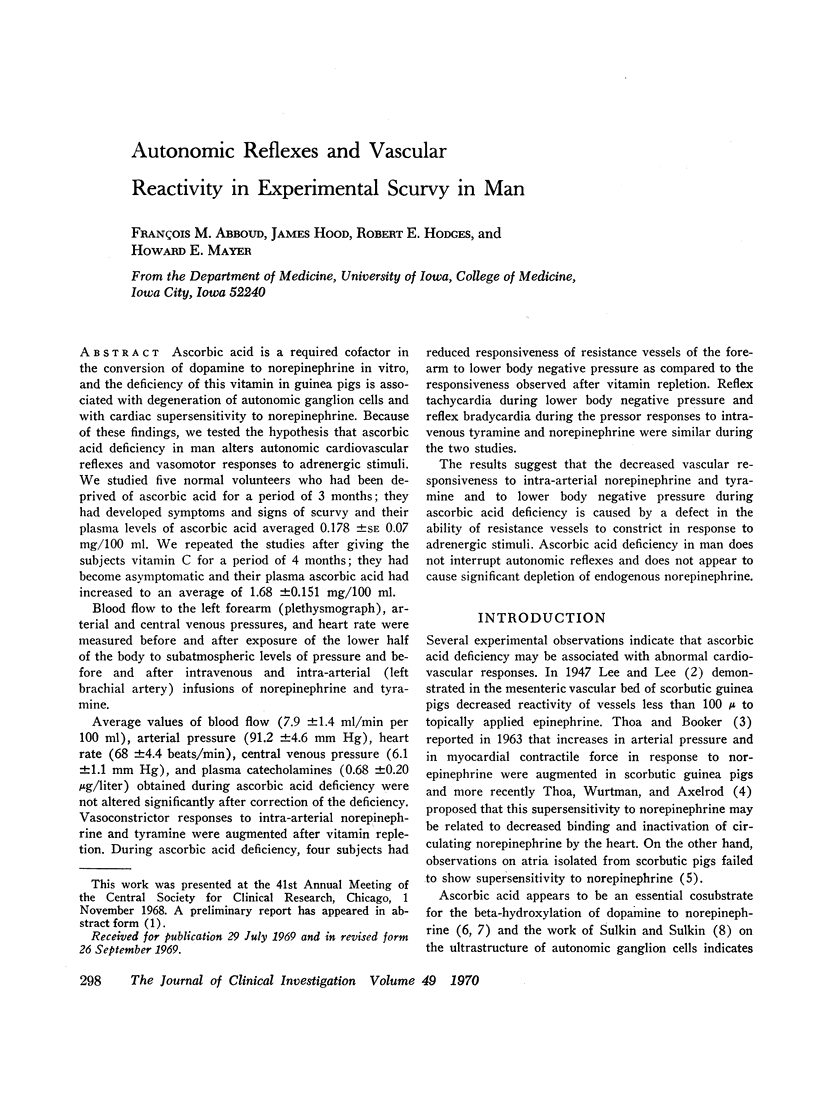
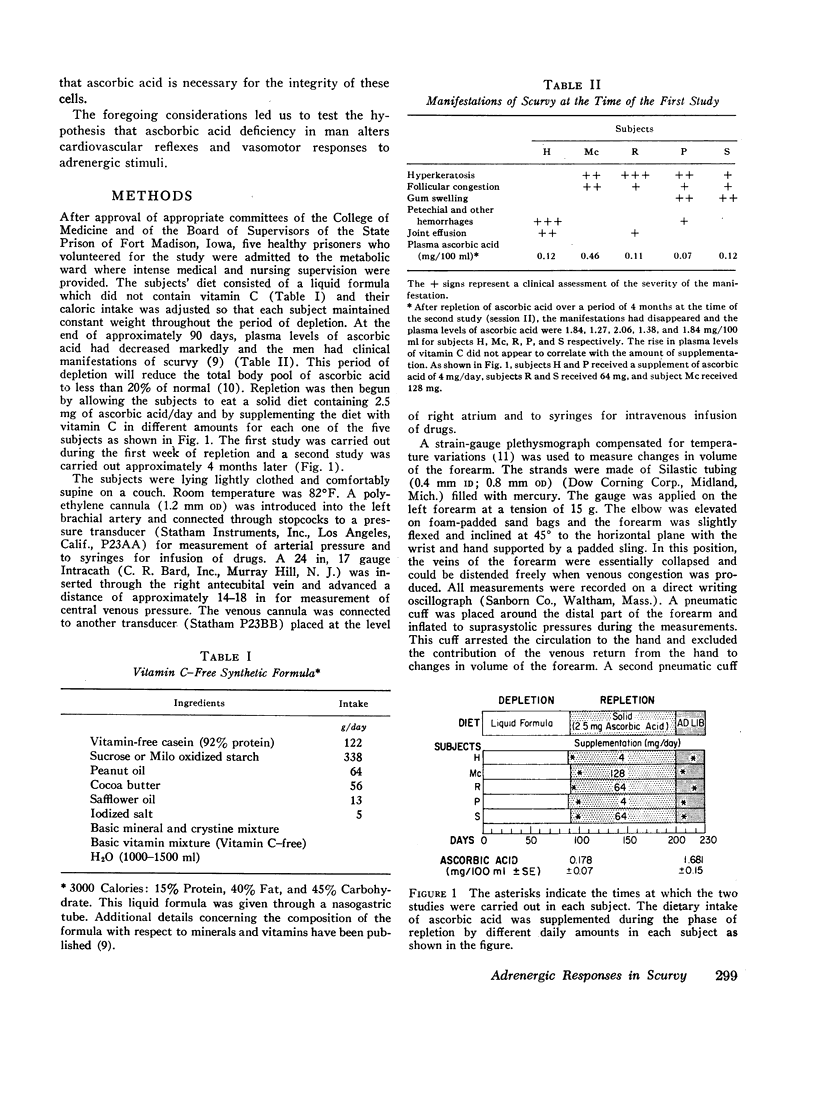
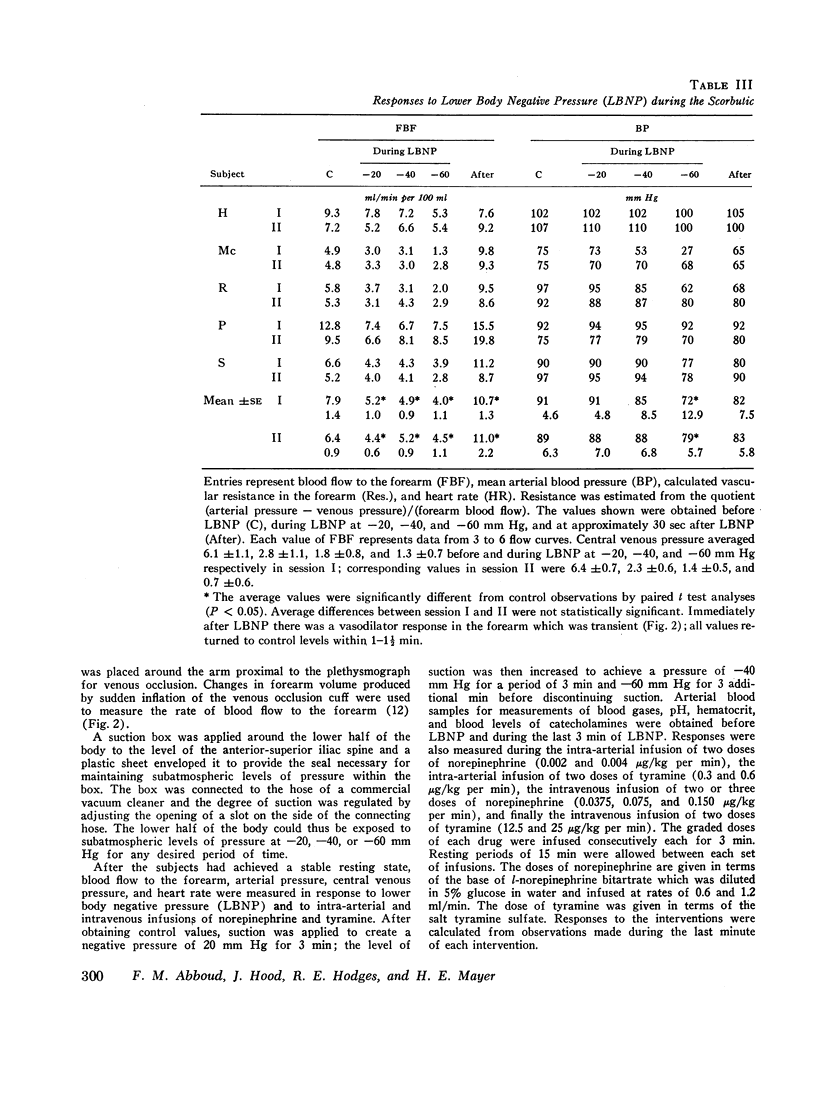

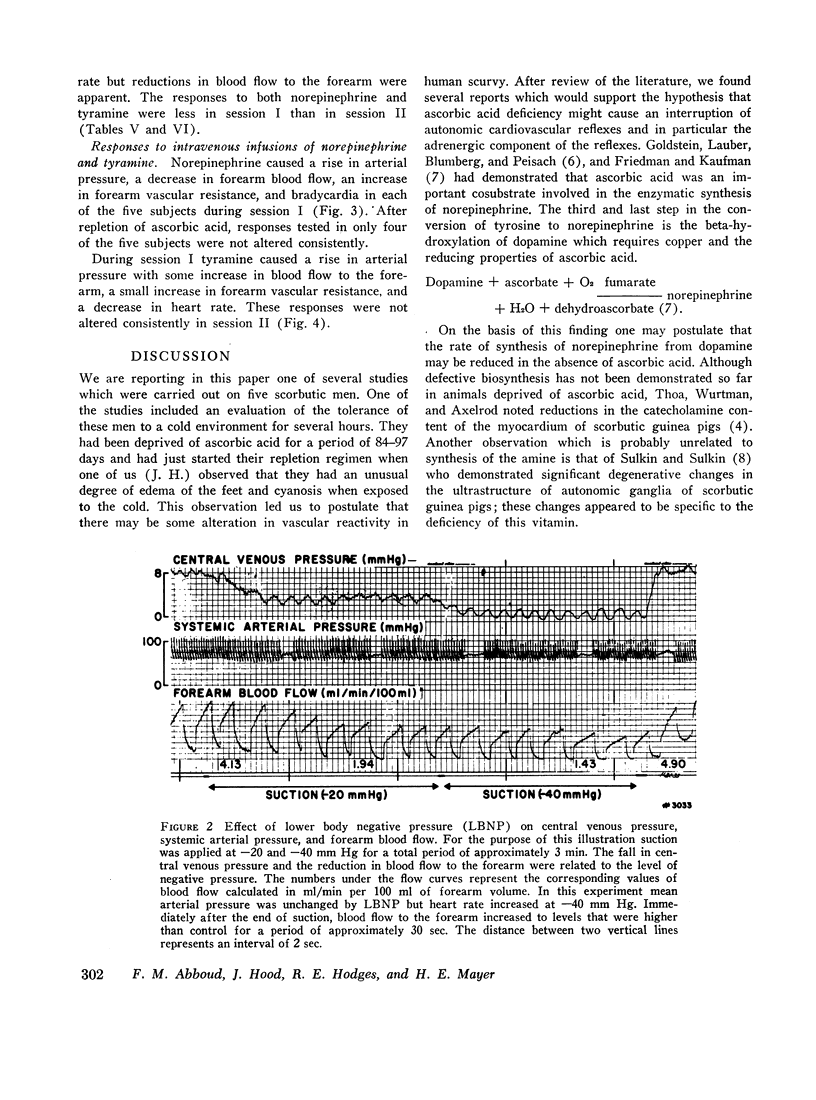
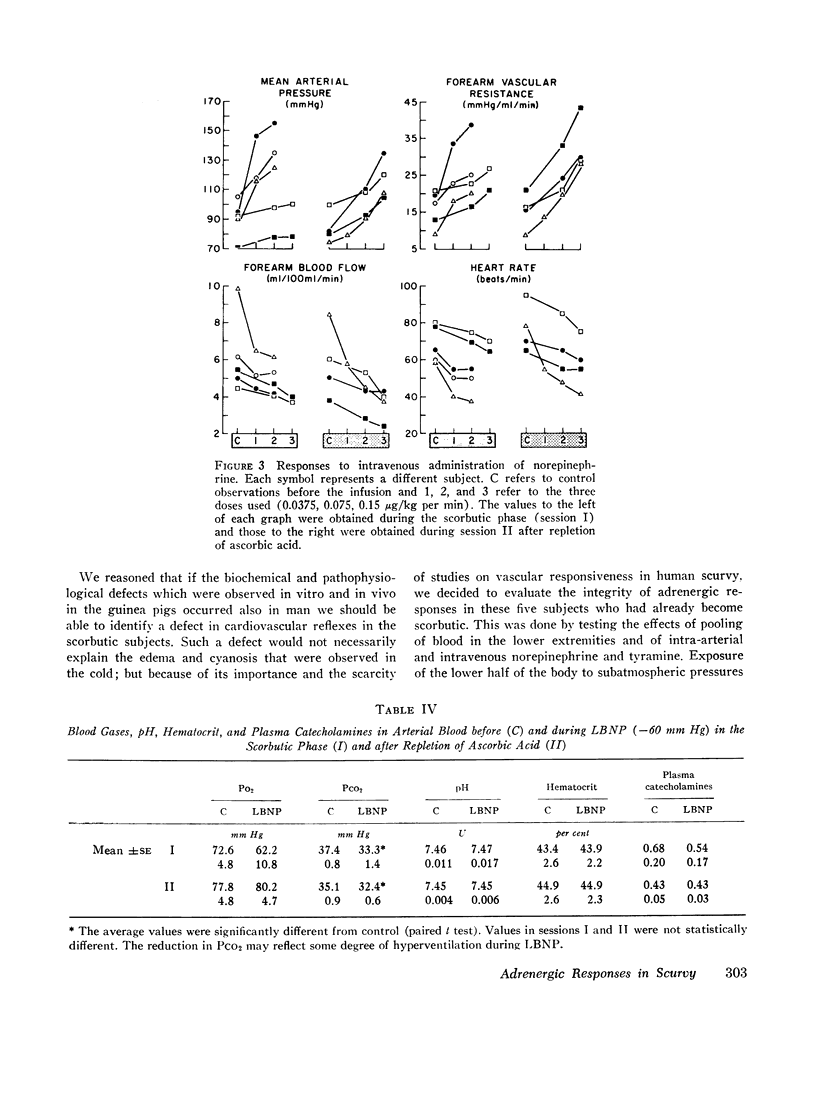
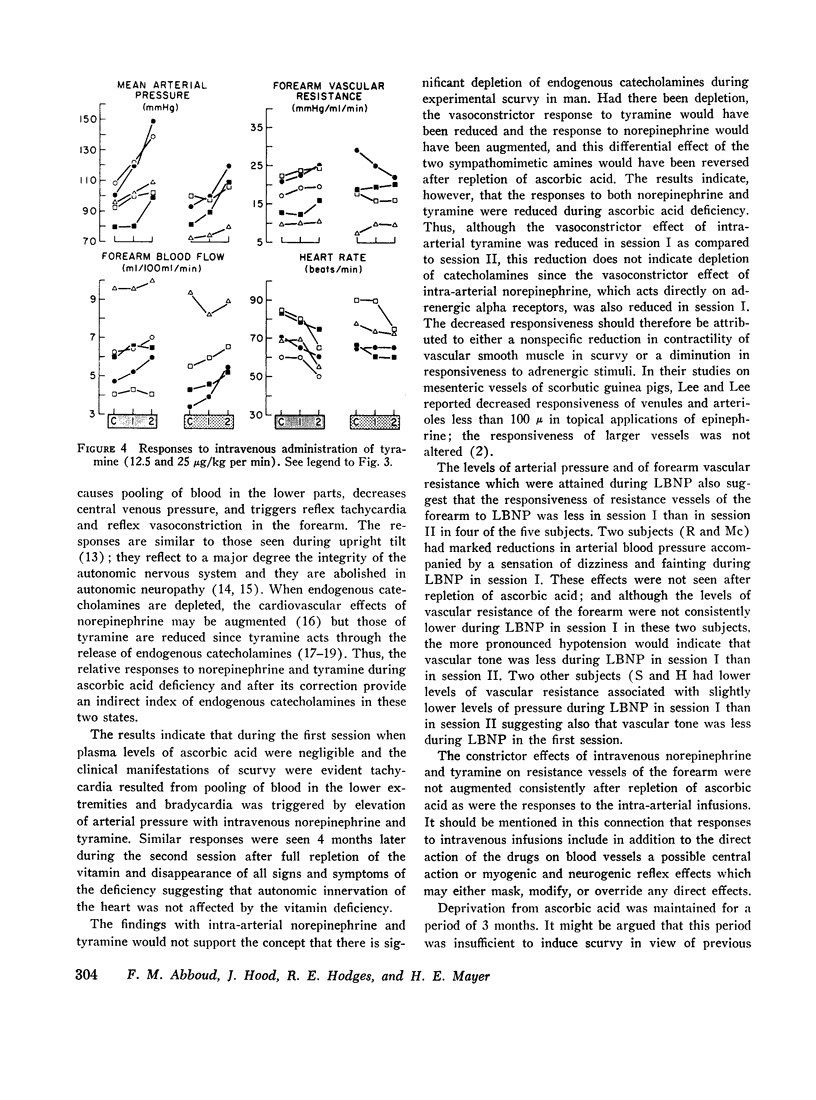
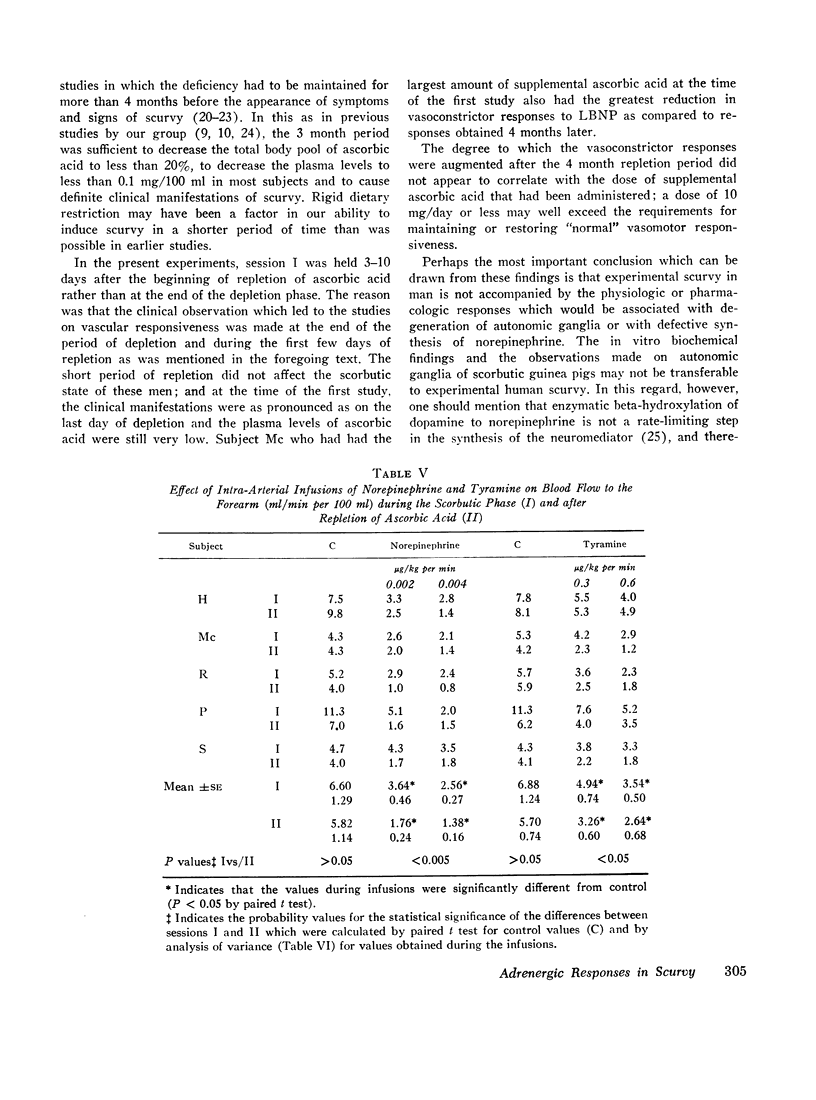
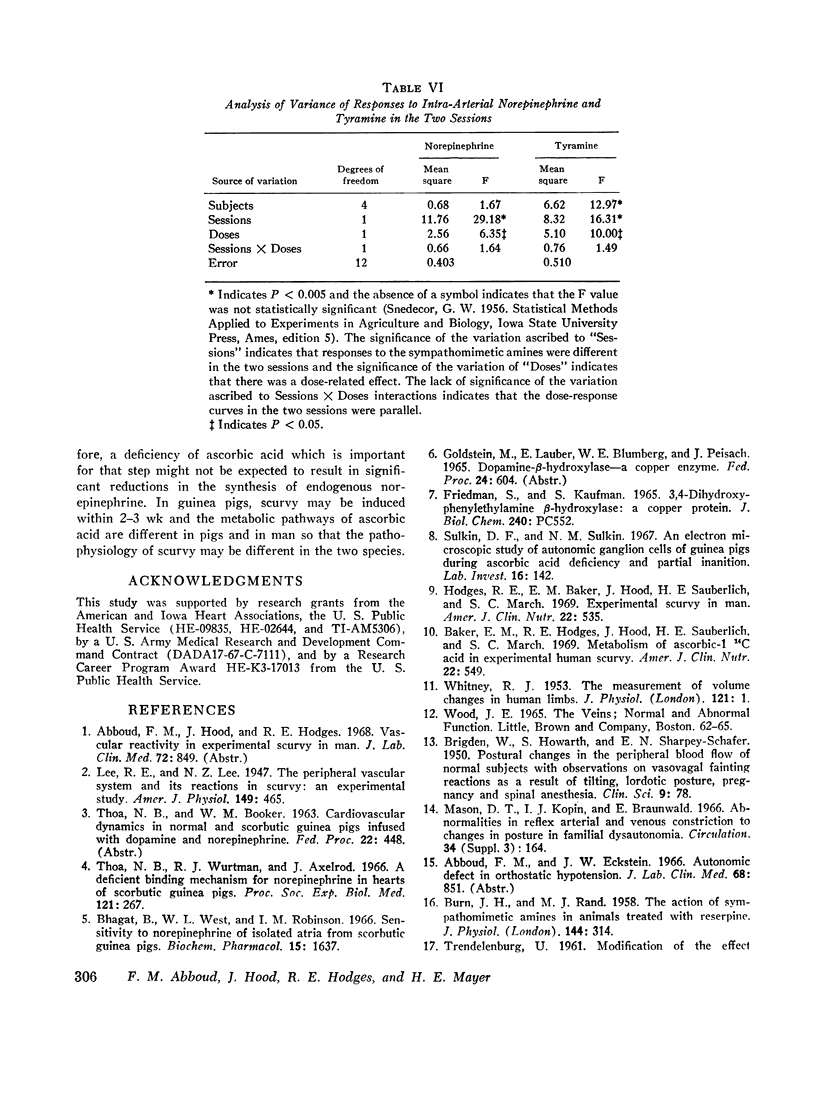
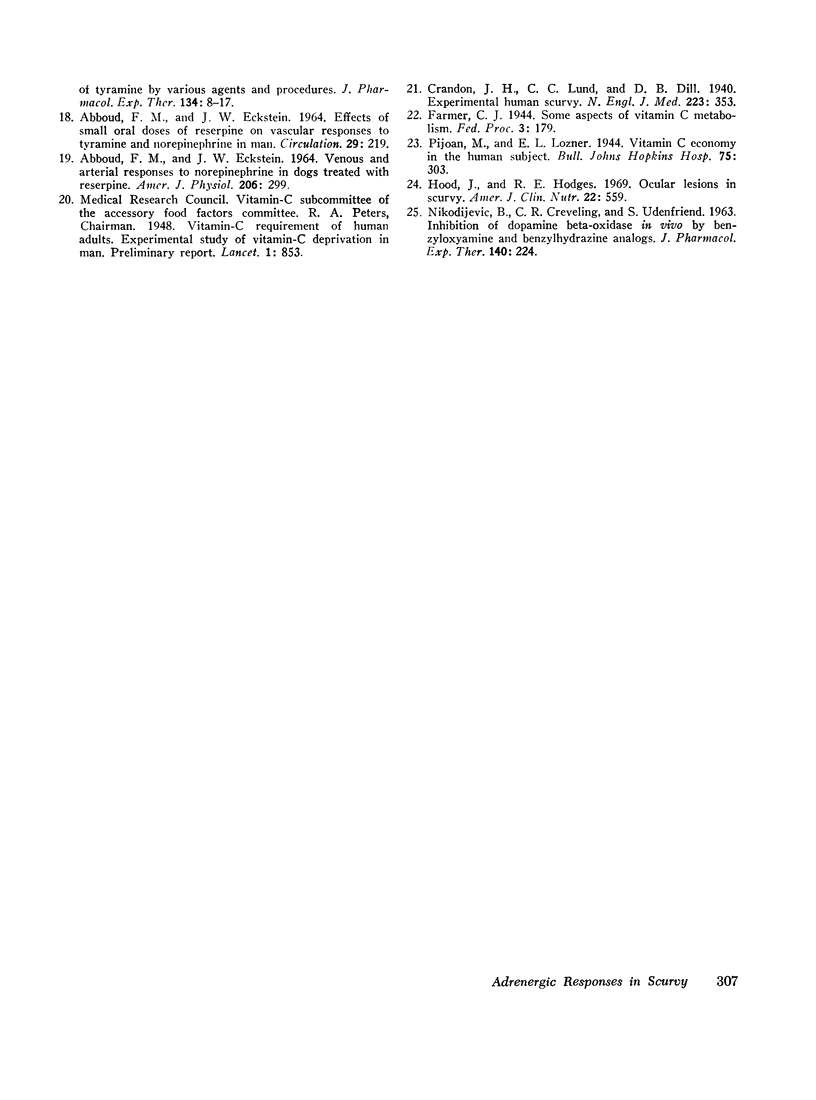
Images in this article
Selected References
These references are in PubMed. This may not be the complete list of references from this article.
- ABBOUD F. M., ECKSTEIN J. W. EFFECTS OF SMALL ORAL DOSES OF RESERPINE ON VASCULAR RESPONSES TO TYRAMINE AND NOREPINEPHRINE IN MAN. Circulation. 1964 Feb;29:219–223. doi: 10.1161/01.cir.29.2.219. [DOI] [PubMed] [Google Scholar]
- ABBOUD F. M., ECKSTEIN J. W. VENOUS AND ARTERIAL RESPONSES TO NOREPINEPHRINE IN DOGS TREATED WITH RESERPINE. Am J Physiol. 1964 Feb;206:299–303. doi: 10.1152/ajplegacy.1964.206.2.299. [DOI] [PubMed] [Google Scholar]
- BURN J. H., RAND M. J. The action of sympathomimetic amines in animals treated with reserpine. J Physiol. 1958 Dec 4;144(2):314–336. doi: 10.1113/jphysiol.1958.sp006104. [DOI] [PMC free article] [PubMed] [Google Scholar]
- Baker E. M., Hodges R. E., Hood J., Sauberlich H. E., March S. C. Metabolism of ascorbic-1-14C acid in experimental human scurvy. Am J Clin Nutr. 1969 May;22(5):549–558. doi: 10.1093/ajcn/22.5.549. [DOI] [PubMed] [Google Scholar]
- Bhagat B., West W. L., Robinson I. M. Sensitivity to norepinephrine of isolated atria from scorbutic guinea pigs. Biochem Pharmacol. 1966 Oct;15(10):1637–1639. doi: 10.1016/0006-2952(66)90215-2. [DOI] [PubMed] [Google Scholar]
- FRIEDMAN S., KAUFMAN S. 3,4-DIHYDROXYPHENYLETHYLAMINE BETA-HYDROXYLASE: A COPPER PROTEIN. J Biol Chem. 1965 Jan;240:PC552–PC554. [PubMed] [Google Scholar]
- Hodges R. E., Baker E. M., Hood J., Sauberlich H. E., March S. C. Experimental scurvy in man. Am J Clin Nutr. 1969 May;22(5):535–548. doi: 10.1093/ajcn/22.5.535. [DOI] [PubMed] [Google Scholar]
- Hood J., Hodges R. E. Ocular lesions in scurvy. Am J Clin Nutr. 1969 May;22(5):559–567. doi: 10.1093/ajcn/22.5.559. [DOI] [PubMed] [Google Scholar]
- NIKODIJEVIC B., CREVELING C. R., UDENFRIEND S. Inhibition of dopamine beta-oxidase in vivo by benzyloxyamine and benzylhydrazine analogs. J Pharmacol Exp Ther. 1963 May;140:224–228. [PubMed] [Google Scholar]
- Sulkin D. F., Sulkin N. M. An electron microscopic study of autonomic ganglion cells of guinea pigs during ascorbic acid deficiency and partial inanition. Lab Invest. 1967 Jan;16(1):142–152. [PubMed] [Google Scholar]
- TRENDELENBURG U. Modification of the effect of tyramine by various agents and procedures. J Pharmacol Exp Ther. 1961 Oct;134:8–17. [PubMed] [Google Scholar]
- Thoa N. B., Wurtman R. J., Axelrod J. A deficient binding mechanism for norepinephrine in hearts of scorbutic guinea pigs. Proc Soc Exp Biol Med. 1966 Jan;121(1):267–270. doi: 10.3181/00379727-121-30754. [DOI] [PubMed] [Google Scholar]





